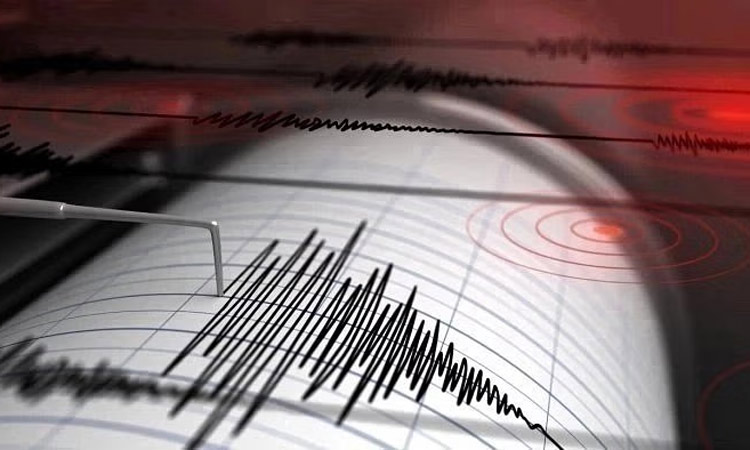Sumatra Shakes: Another Earthquake Rattles Indonesia, Stirring Tsunami Fears
Hey everyone, it’s been a shaky week, literally. Just as we were processing news of earthquakes in Pakistan and Afghanistan, Indonesia’s Sumatra island was hit by a significant earthquake today. According to reports, the quake registered a magnitude of 6.2 on the Richter scale, sending tremors through the region and sparking understandable anxiety. Let’s break down what we know so far and why it’s causing such concern.
The article excerpt you provided from a news source (translated from Tamil) highlights a recurring trend: seismic activity around the globe. In this case, the focus is on Sumatra, Indonesia, where a 6.2 magnitude earthquake struck near the city of Pinjai in North Sumatra. The report mentioned people fleeing their homes and rushing into the streets in fear. It also brought up the devastating 2004 earthquake in Sumatra that triggered the catastrophic Indian Ocean tsunami, a tragedy that’s still fresh in many people’s minds. The article also pointed out a 5.1 magnitude earthquake that happened in Indonesia last week.
Why is this important? Because Indonesia is located in a particularly seismically active area known as the "Ring of Fire." This region, circling the Pacific Ocean, is a hotbed of tectonic activity due to the convergence and interaction of multiple tectonic plates. These plates are constantly moving, grinding against each other, and sometimes, they slip suddenly, releasing massive amounts of energy in the form of earthquakes. A big one underwater? That can generate a tsunami.
The Ring of Fire: Indonesia’s Geologic Reality
Think of the Earth’s crust as a giant jigsaw puzzle, but the pieces are constantly moving. Indonesia sits on a complex intersection of these pieces, specifically the Eurasian, Australian, and Pacific plates.
- The subduction of the Indo-Australian plate beneath the Eurasian plate is a major driver of earthquakes and volcanic activity in the region.
- The complex fault lines running through Sumatra also contribute to frequent seismic events of varying magnitudes.
This geological reality means that earthquakes are a common occurrence in Indonesia. The country has well-established protocols for monitoring seismic activity and issuing warnings, but predicting exactly when and where a major earthquake will strike remains a significant challenge.
Echoes of 2004: Why Tsunami Fears Are Real
The 2004 Indian Ocean earthquake and tsunami are etched into the collective memory. That catastrophic event, triggered by a massive 9.1-9.3 magnitude earthquake off the coast of Sumatra, caused unimaginable devastation across the region, claiming hundreds of thousands of lives. The memory of that tragedy understandably fuels anxiety when a significant earthquake occurs in the area, particularly when it’s centered offshore.
While a 6.2 magnitude earthquake can potentially generate a tsunami under certain circumstances (depth, fault type), it’s not always the case. Initial reports suggest that a tsunami warning was not issued immediately following this particular earthquake, but close monitoring is crucial in the hours following any seismic event of this nature.
Authorities are likely assessing the following:
- Seabed displacement: Did the earthquake cause a significant vertical shift in the ocean floor?
- Wave buoy readings: Are there any unusual wave patterns detected by tsunami monitoring buoys in the surrounding area?
- Coastal observations: Are there any signs of unusual sea-level changes in coastal communities?
What’s Next? Staying Informed and Prepared
For those in and around Sumatra, the focus now is on staying informed and alert. Local authorities will continue to monitor the situation and provide updates as they become available. Here are a few key things to keep in mind:
- Trust official sources: Rely on information from credible news outlets, government agencies (like the Meteorology, Climatology, and Geophysical Agency of Indonesia (BMKG)), and emergency responders.
- Be aware of your surroundings: If you live in a coastal area, know the signs of a potential tsunami (e.g., sudden receding of the sea, strong ground shaking).
- Have a plan: Know your evacuation route and where to go if a tsunami warning is issued.
Earthquakes are a natural part of life on our planet, especially in regions like Indonesia. While we can’t prevent them from happening, staying informed, prepared, and connected to reliable information sources is the best way to protect ourselves and our communities. I will continue to monitor this situation and provide updates as needed. Stay safe. #SumatraEarthquake #Indonesia #Earthquake #Tsunami #RingofFire #News
